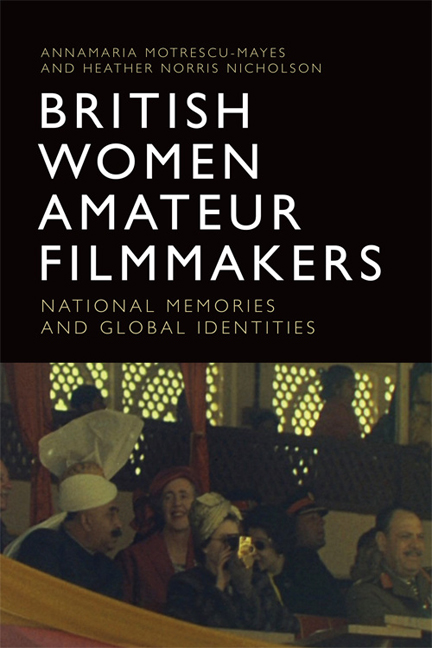Book contents
- Frontmatter
- Contents
- List of Figures
- List of Sources and Abbreviations
- Acknowledgements
- Foreword
- 1 Amateur Women Filmmakers as Producers of Cultural Meaning
- 2 Webs of Production and Practice
- 3 Resisting Colonial Gendering while Domesticating the Empire
- 4 Cameras Not Handbags: The Essential Accessory
- 5 Through Women's Lens: Imperial and Postcolonial Class and Gender Hierarchies
- 6 Teacher Filmmakers
- 7 British Women's Media Narratives of Gender and Collective Memory
- 8 Reimagining Boundaries: Amateur Animations
- Afterword
- Selected Bibliography
- Index
2 - Webs of Production and Practice
Published online by Cambridge University Press: 12 November 2019
- Frontmatter
- Contents
- List of Figures
- List of Sources and Abbreviations
- Acknowledgements
- Foreword
- 1 Amateur Women Filmmakers as Producers of Cultural Meaning
- 2 Webs of Production and Practice
- 3 Resisting Colonial Gendering while Domesticating the Empire
- 4 Cameras Not Handbags: The Essential Accessory
- 5 Through Women's Lens: Imperial and Postcolonial Class and Gender Hierarchies
- 6 Teacher Filmmakers
- 7 British Women's Media Narratives of Gender and Collective Memory
- 8 Reimagining Boundaries: Amateur Animations
- Afterword
- Selected Bibliography
- Index
Summary
The involvement of women was absolutely vital. I don't think the IAC or any club would have survived without women's involvement, whether or not they were filmmakers.
Phillip Collins’ assessment of women's marginalisation within Britain's amateur visual practice draws upon almost fifty years of being involved with the IAC. Reclaiming these neglected roles reappraises the IAC's own development as it brought visibility and coherence to twentieth-century recreational filmmaking. Testimonies from current long-serving IAC members produce a picture of single and married women who gained reputations as dedicated club members and innovative filmmakers. Newer archival acquisitions also point to more women making films than suggested by a hobby press that long downplayed women's agency (Norris Nicholson 2012a: 62–91). Previously untold stories drawn from its own practitioners and paperwork thus reinvigorate the contradictions, skewed gender politics and rather inward-looking nature of past amateur film activity.
Tony Rose (1971: 153) admitted ‘Amateur filmmaking is a notoriously male-dominated pursuit’ and under his editorship, Movie Maker featured cover-girls and pin-ups and advertisements for filming nudity. While the hobby literature's tone possibly alienated some would-be practitioners for years, it also indicates that women remained an active minority within organised filmmaking circles even if focusing solely on their known film output. Another narrative emerges, however, from interviews with filmmakers or people who knew them, other printed matter and identifiable films made by women. These additional sources reveal how gendered visual practices and supportive roles developed across cine networks, inflected by geographical, sociopolitical and cultural differences. They augment our understanding of the part played by formal filmmaking groups in women's lives and their varied contributions to evolving amateur visual practices.
Women's emerging visibility within a more broadly conceived amateur film practice may be set alongside emerging histories of British women's professional involvement in visual media and broadcasting (Hockenhull 2017; Gledhill and Knight 2015; Foster et al. 1998). Like their paid contemporaries, amateur practitioners assumed overlooked roles and responsibilities that have often been credited solely to men. Apart from their hidden contributions to scriptwriting, editing, sound, titling, continuity and other practical aspects of location and post-production work, women were often key to keeping clubs going. Their levels of voluntary commitment and service resemble gendered patterns of activity in other associational networks and settings (Hinton 2002: 213–30).
- Type
- Chapter
- Information
- British Women Amateur FilmmakersNational Memories and Global Identities, pp. 30 - 56Publisher: Edinburgh University PressPrint publication year: 2018

